 By Ted Beyer
By Ted Beyer
For about a week each year, the staffing here at Educational Innovations swells by a whopping 500%. These extra hands come to us largely from local high schools, with a few college students and adults mixed in. The question you are doubtless asking is WHY?
Long story, but stick with me, it’s interesting…
The Birth of PhysicsQuest
 Some 14 years ago Jessica Clark, the American Physical Society (APS) Director of Outreach at the time, approached me at an AAPT conference. She asked me to lunch. When I asked her what was up, she very quietly said, “I need you to save me from [Giant Science Supply Company].” Needless to say, I was intrigued. Soon we had a quick lunch with lots of conversation.
Some 14 years ago Jessica Clark, the American Physical Society (APS) Director of Outreach at the time, approached me at an AAPT conference. She asked me to lunch. When I asked her what was up, she very quietly said, “I need you to save me from [Giant Science Supply Company].” Needless to say, I was intrigued. Soon we had a quick lunch with lots of conversation.
It turns out APS was just launching PhysicsQuest, an ambitious outreach program designed to put physics experiments into thousands of middle school classrooms at no charge. But they were decidedly unhappy with the product that [Giant Science Supply Company] had turned out for them.
As soon as I got back to the EI office—armed with specifications and a clear understanding of what APS found disappointing—we collectively rolled up our sleeves. We went to work sourcing the materials for the experiments in the kits and working out procedures. Before long, we submitted our bid to APS.
PhysicsQuest through the Years
We soon found ourselves assembling 5,000 PhysicsQuest kits and shipping them to more than 1,000 schools around the United States. Every year since then, we have worked with APS to produce and ship the yearly PhysicsQuest kits that have become something of an institution in middle school classrooms.
Over the years, APS and Educational Innovations have collaborated together to develop the content of the kits in the most engaging, cost-effective way possible. For the past few years, the project has grown to 20,000 kits! As you can imagine, the “cost effective” part of the project is of prime importance. In fact, we track costs out to the thousandths of a penny in our budgeting paperwork!
For much of the process, PhysicsQuest lives on my desk and in my computer. I work with APS to figure out the components to make their experiments work… I prepare supply lists and arrange for all the necessary materials—often from vendors we don’t usually work with. Many PhysicsQuest materials are not classic science supplies. They come from all sorts of industries, so it often take some serious thinking outside of the box to get everything perfectly lined up.
For me, the most fun part of the project is the back and forth I enjoy with my counterparts at APS. Over the years, we have developed a working relationship where APS no longer tells me what precisely they want in terms of materials. Instead, they tell me what they are trying to accomplish and then we work together to make it happen.
A PhysicQuest Quandary
A case in point is legendary here at EI. One year, I was asked to supply butter. Butter? How can we store and ship butter in a kit like this? It’s impossible. The response from APS was, “Fine! You figure it out!”
“Well,” said I, “What are you trying to accomplish?”
Their answer was, “We need something that is potion controlled, individually packaged, has a low melting point—and, of course, is non-toxic.”
I spent that weekend racking my brain trying to think of something that would fit those parameters. Late Sunday evening a TV commercial caused me to recall a long-ago product slogan: Melts in your mouth, not in your hand. I did the calculations: your mouth’s temperature is about 92o – 94o F, which is really pretty low…
Of course the answer was chocolate!
And that’s how it came to pass that EI had a pallet with 975 pounds of Hershey’s Kisses delivered. Not your average science supply!
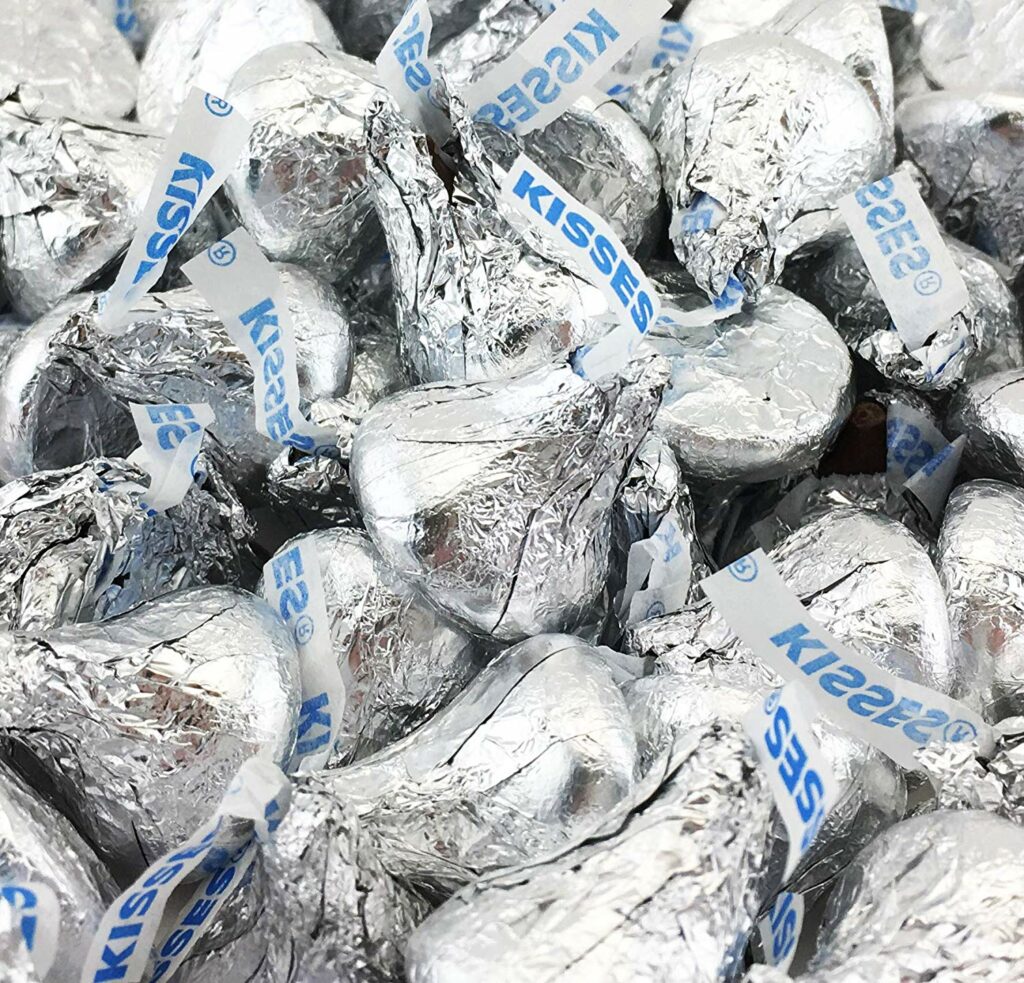
Let the Building Begin!
As soon as the materials arrive, our team goes to work packaging the bits and pieces. Sometimes they must divvy up huge sacks of components into smaller bags. At other times, all PQ workers are busy counting out a specific number of a single item and bagging them.
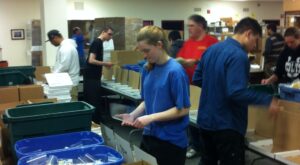
The list of things we have handled is immense—many different kinds of drinking straws, chopsticks, pencils, any number of different wires, at least two kinds of salt, sugar, Splenda, metal sheets, glass sheets, molding clay, sandpaper, thermometers, yo-yos, cloth bags, batteries, even colorful little paper umbrellas on toothpicks…. And of course, Hershey’s Kisses.
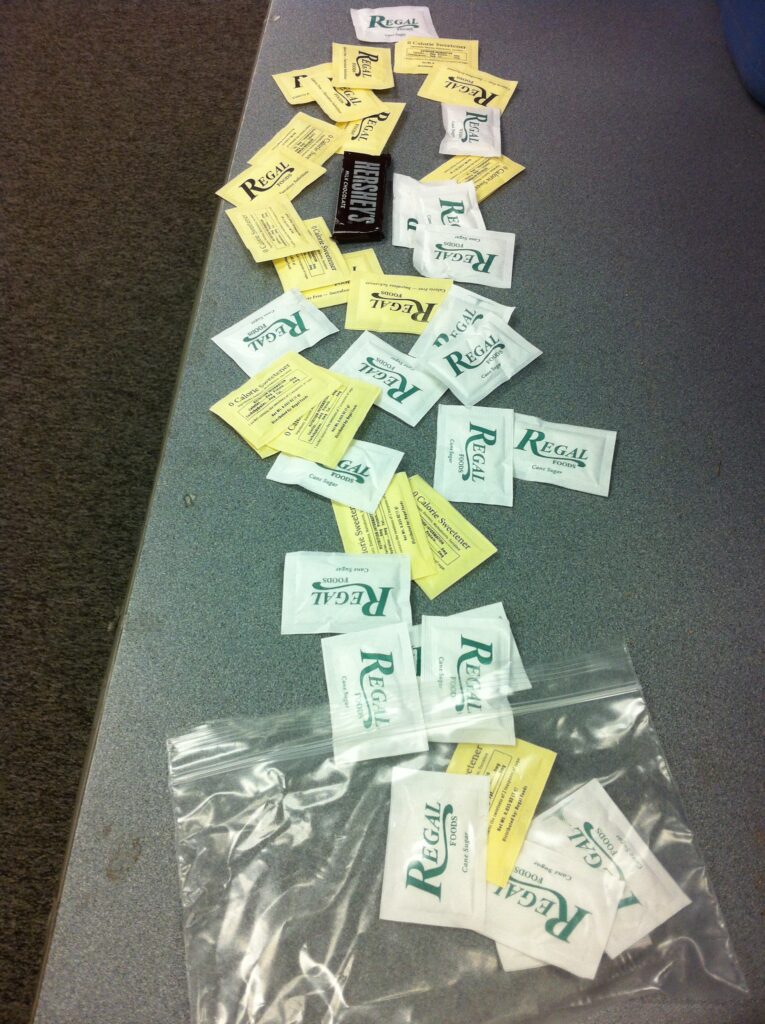
The materials list is seemingly endless, and eclectic to say the least. The cool part is that, year after year, these goodies all come together to create four different, hands-on physics experiments that teach solid physics principals in a simple and engaging way.
APS supplies us with a book filled with teacher’s instructions and student worksheets that guide users through the experiments. The book is different each year. They were originally based on the works of famous physicists, but for the last few years they took the form of a comic book in which middle school superhero Spectra (and her friends) must save their town from various perils, thanks to science.
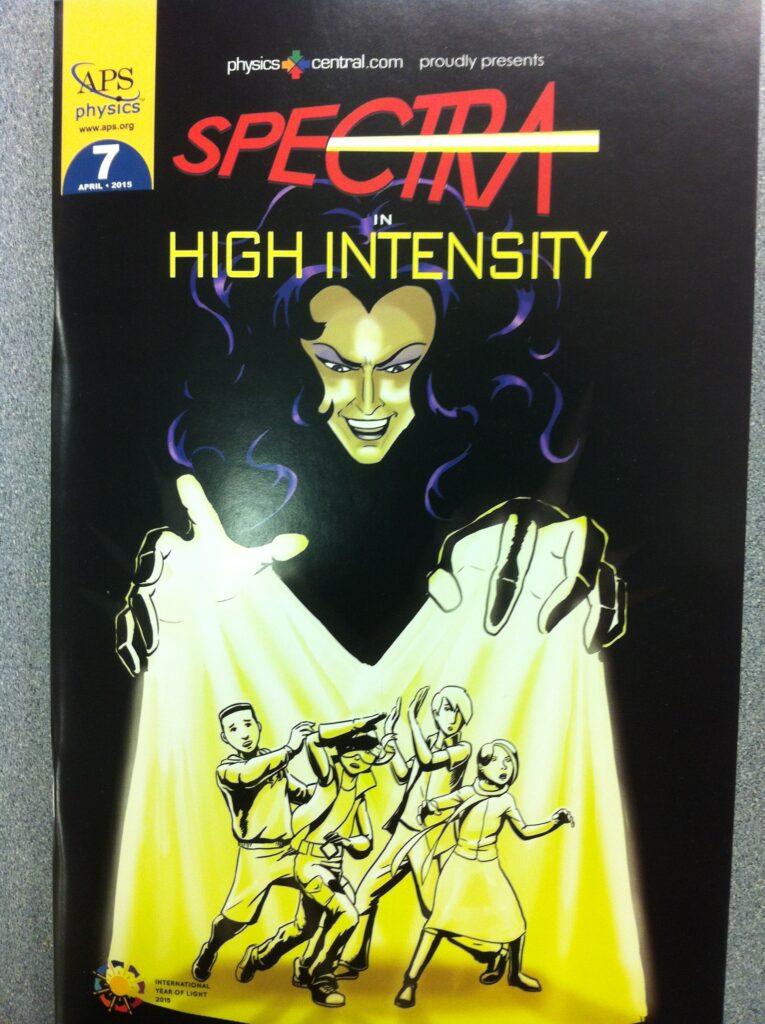
The Final Push
That huge crowd of extra workers I mentioned above? They come in for the last big push. That’s when we assemble all the components we have pre-built into final kits, and then package the kits for shipment. It’s quite a sight!
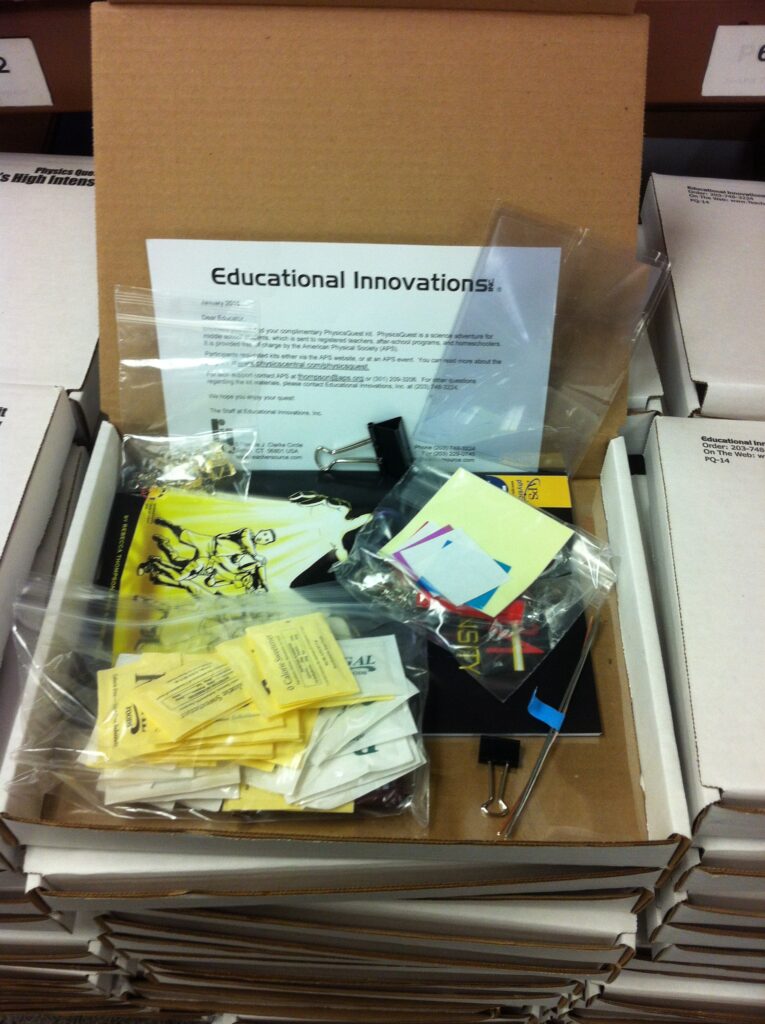
We require special visits from our shipping partners to get the PhysicsQuest kits on the road. In less than a week, all 20,000 kits are on their way to more than 4,000 classrooms all over the United States.
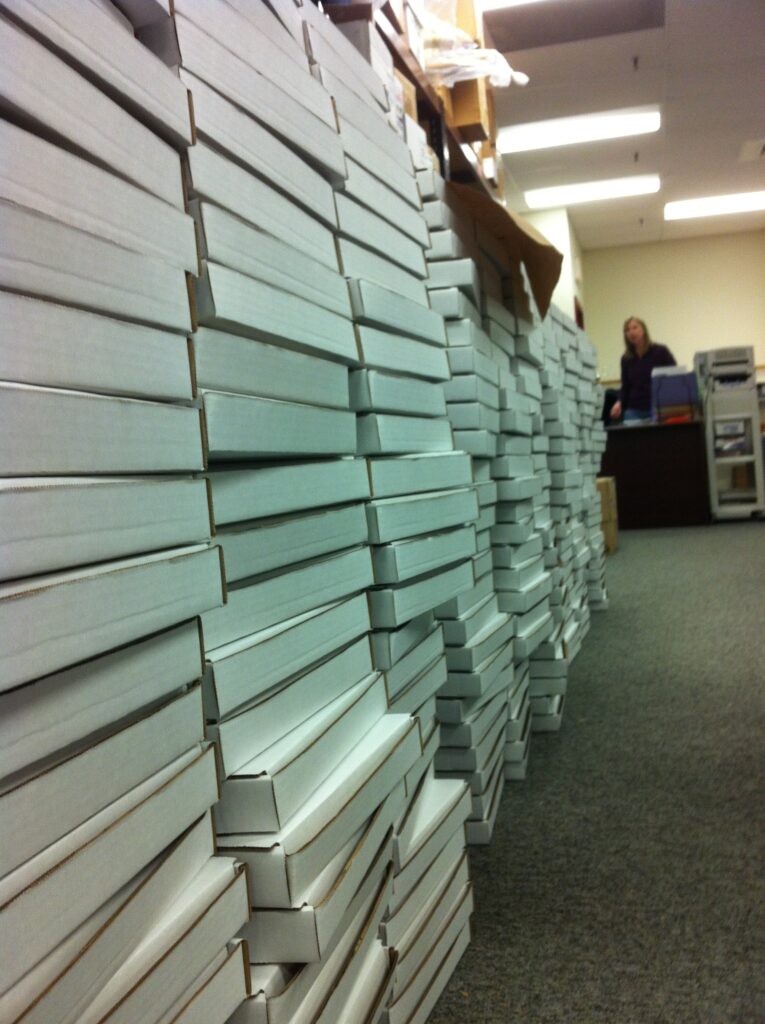
Needless to say, we are very proud of the work we do on PhysicsQuest for APS. We hope to keep making their kits for many years to come. It IS a lot of hard work for our team—but it’s also a LOT of fun as well!
I should note that although we manufacture the kits, we cannot provide them to you unless you sign up in advance with APS. (Although we do have some of the older kits available for sale on our website.) If you are a middle school teacher interested in receiving a kit, click here for sign up information. They are available on a first-come, first-served basis, while supplies last.
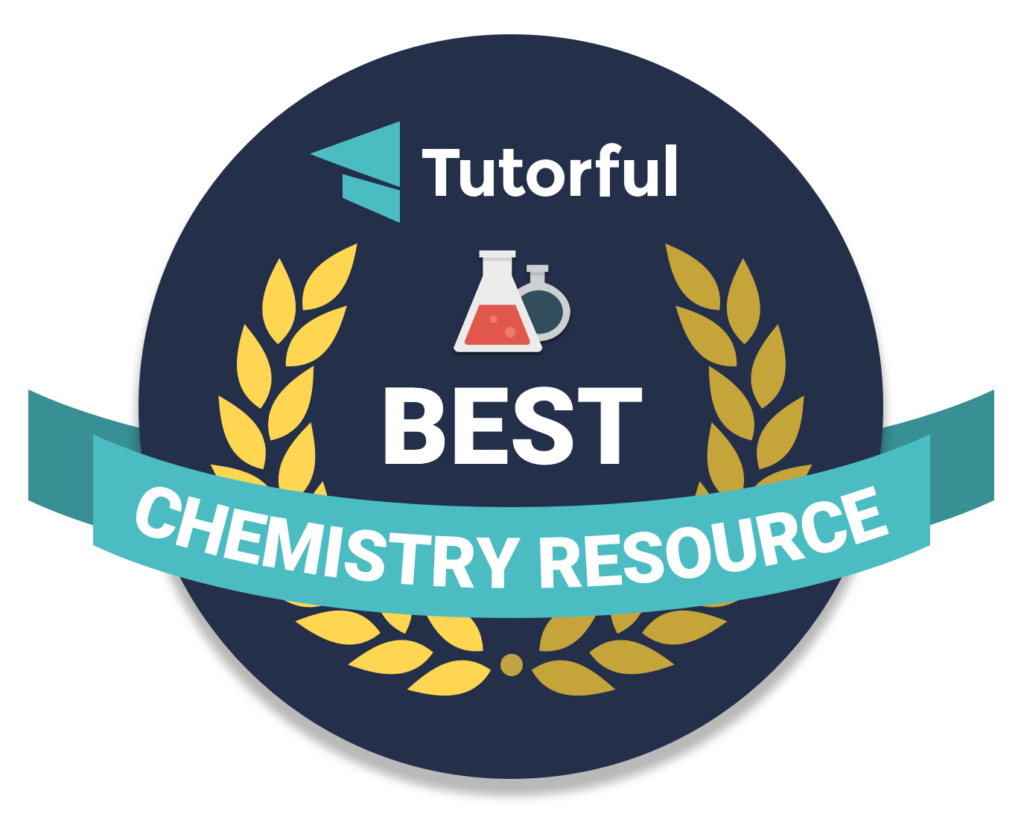
This entry was posted on Friday, November 29th, 2019 at 1:06 am and is filed under About Us, Middle School level, Physics. You can follow any responses to this entry through the RSS 2.0 feed. You can leave a response, or trackback from your own site.